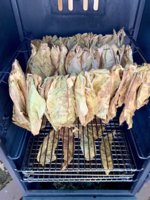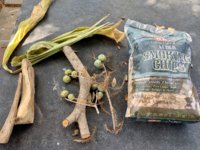Jvergen
Well-Known Member
Whew! It's exhausting to comment on pseudo experts.

This is the entirety of my home-grown herb harvest for 2019. There is English lavender, mint and Greek oregano. I'll put them out on the back porch to dry.
On the "soapy" front, I ordered some "Organic, unscented, hypoallergenic soap." When it arrived, I noted immediately that it smelled "soapy"--that is, it smelled like old fashion, scented soap. The label touted its wonderfulness, but the ingredients listed "oil of rosemary." Unscented? Rosemary?
I emailed the vendor to inquire as to why my unscented soap was scented. His response was that, in the absence of chemical antioxidants to keep the soap from going rancid, rosemary has been used for centuries--since it contains natural antioxidants.
Latakia smells "soapy".
Rosemary stems turned into charcoal smell like Latakia.
Rosemary has long been used in preserving soap.
Bob
Thought you might find this interesting supplier to the food industry.
Food Ingredients for Natural Food Protection, Taste & Sensory, Colors and Hop Solutions | Kalsec
Create food & beverage products that look great, taste great and last longer with Kalsec's Natural Taste & Sensory, Color, Protection & Hop Solutions.
 www.kalsec.com
www.kalsec.com
Jeff


![20190914_093642[1].jpg](/data/attachments/24/24284-21a6aa78caecec7a045f9fd8c54dfde9.jpg)
![20190914_093612[1].jpg](/data/attachments/24/24285-36a6cbdf31a8dab1d15693621b991b4f.jpg)
![20190914_093623[1].jpg](/data/attachments/24/24286-8217f5429e925d427f46d33cdd531255.jpg)
![20190914_123432[1].jpg](/data/attachments/24/24287-5602b09a365a8f420c8c93322eb9b4b1.jpg)
![20190914_123259[1].jpg](/data/attachments/24/24288-1dfb9cf65f1dd4d7cea47ce6b185ba29.jpg)




